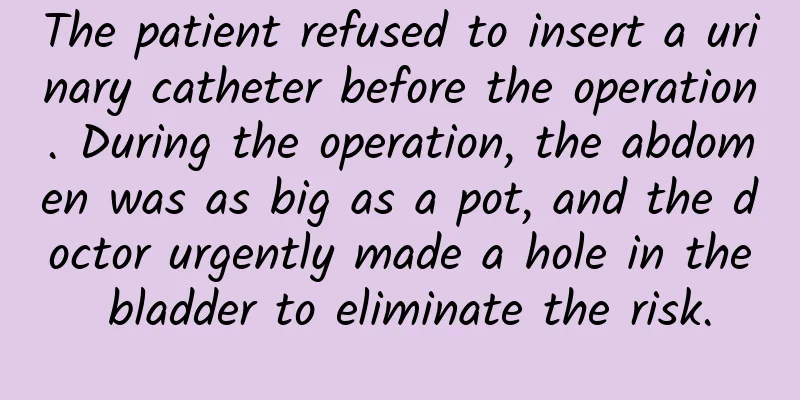Things during pregnancy - Do you know what placenta previa is?

|
This is the 5277th article of Da Yi Xiao Hu Pregnancy is a magical journey in life. Pregnant mothers not only bear the miracle of life, but also experience various changes in their bodies. During this process, many professional medical terms may make people feel unfamiliar or even a little uneasy, such as "placenta previa". What exactly is placenta previa? What factors can cause it? What are the effects on pregnant mothers and babies? What is placenta previa? Placenta previa is a serious complication during pregnancy, which means that the placenta partially or completely covers the internal os of the cervix. This situation can easily cause a lot of painless vaginal bleeding in late pregnancy or during delivery, which seriously threatens the life safety of pregnant women and fetuses. Placenta previa can be divided into: ① Complete placenta previa (or central placenta previa): the placental tissue completely covers the internal os of the cervix. ② Partial placenta previa: the placental tissue covers part of the internal os of the cervix. ③ Marginal placenta previa: the placenta is attached to the lower segment of the uterus, and the lower edge reaches the internal os of the cervix. ④ Low-lying placenta: the placenta is attached to the lower segment of the uterus, and the edge is <2cm away from the internal os of the cervix. Figure from the Chinese Medical Association Obstetrics and Gynecology Branch. (2023). Obstetrics and Gynecology (9th edition). People's Medical Publishing House. What situations may cause placenta previa? If painless vaginal bleeding occurs and is accompanied by signs of anemia (pale skin and mucous membranes, headache, dizziness, tinnitus, syncope, fatigue, inattention and memory loss, etc.), pregnant women need to go to the hospital immediately. What causes placenta previa? High-risk factors that may cause placenta previa include: multiple pregnancy, multiple pregnancies, drug abuse, previous history of cesarean section, history of intrauterine operation, smoking, older pregnant women, drug abuse, assisted reproductive technology, etc. What impact does placenta previa have on pregnant mothers and fetuses? Effects on pregnant women Bleeding, postpartum infection, anemia and premature birth are common during and after delivery. Effects on the fetus Repeated bleeding in pregnant women or excessive bleeding in one go can cause fetal intrauterine hypoxia, and in severe cases, intrauterine fetal death. Do pregnant women with placenta previa need to stay in bed? 1. Bed rest If a pregnant mother experiences bleeding or the placenta is in a low position, she should minimize activity and rest in bed to reduce the risk of bleeding and alleviate symptoms. 2. Hospitalization for observation If the bleeding is severe or the pregnancy is early, the pregnant mother may need to be hospitalized for observation and treatment. 3. Regular monitoring Even if you do not need to stay in bed, pregnant mothers still need to undergo regular ultrasound examinations to monitor the position of the placenta and the health of the fetus. How far away from the exit should the placenta be safe? If the distance is more than 2cm, it is relatively safe, and most people's placentas can grow slowly before delivery. However, when the edge of the placenta is within 2cm of the internal cervical os but does not cover the internal cervical os, it is considered a "low-lying placenta." For pregnant women with low-lying placentas, regular ultrasound examinations are usually required to monitor changes in the position of the placenta, and decide whether special measures or follow-up observations are needed based on the specific situation. How to determine the timing and method of terminating pregnancy due to placenta previa? 1. For asymptomatic pregnant women, it is recommended to terminate the pregnancy at 36 to 38 weeks of gestation. 2. For pregnant women with a history of recurrent vaginal bleeding, placenta accreta or other high-risk factors, consider terminating the pregnancy at 34 to 37 weeks of gestation. 3. Pregnant women with asymptomatic low-lying placenta and no cephalopelvic disproportion, especially those whose placental edge is 11-20 mm from the internal cervical os measured by transvaginal ultrasound after 35 weeks of pregnancy, may consider natural delivery. Does every case of placenta previa require a cesarean section? 1. If the edge of the placenta is greater than 20mm away from the internal cervical os, vaginal delivery can be performed. 2. If the edge of the placenta is 0-20 mm away from the internal cervical os, the probability of cesarean section is higher. 3. If the placenta covers the internal os of the cervix, a cesarean section is required. Dear pregnant mothers, you may feel worried or anxious when you learn about placenta previa. It is recommended that pregnant mothers avoid behaviors that may cause endometrial damage, such as avoiding unnecessary intrauterine operations, maintaining good personal hygiene habits, preventing reproductive system infections, and quitting smoking and avoiding drug abuse to reduce the risk of placenta previa. On the other hand, if placenta previa occurs, it is necessary to go to the hospital for a professional ultrasound examination in time, and the doctor will evaluate the position of the placenta and the condition of the fetus, and carry out necessary treatment and care according to the doctor's advice. And some studies suggest that as pregnancy progresses, most placentas naturally move upward and gradually leave the cervix. For example, one study showed that 66% to 98% of low-lying placentas diagnosed in the second trimester disappeared in the third trimester. This suggests that as pregnancy progresses, most placentas naturally move upward and gradually leave the cervix. Pregnant mothers please note: Placenta previa is not scary, follow-up monitoring is the most important. author Song Xinyi, 2023 Academic Master of Nursing Student, School of Nursing, Shanghai Jiao Tong University Luo Peiyang, Academic Master of Internal Medicine, Class of 2024, The Sixth People's Hospital Affiliated to Shanghai Jiao Tong University Gu Kaiyan, Academic Master of Obstetrics and Gynecology, Renji Hospital, Shanghai Jiao Tong University, Class of 2024 Chen Yi, Academic Master of Surgery, Ruijin Hospital, Shanghai Jiao Tong University, Class of 2024 Cao Kejing, 2024, Doctoral student in Internal Medicine, Xinhua Hospital, Shanghai Jiao Tong University Li Xinru, Master of Nursing, Class of 2024, School of Nursing, Shanghai Jiao Tong University Instructor Winfrey Lecturer, School of Nursing, Shanghai Jiao Tong University |
>>: How to effectively prevent the H1N1 flu? Experts remind us
Recommend
What is the pain on the upper left side of the chest?
Pain in the upper left side of a woman's ches...
What kind of haircut is good for a 50-year-old woman
A 50-year-old woman has reached a very mature age...
Take care of your knees! The knee joint sends these signals, beware of synovial folds
The patient, Ms. Wang, came to the Department of ...
What are the dangers of smoking for women?
In life, smoking is a privilege of men, but with ...
Is the chance of pregnancy high?
Getting pregnant is a personal decision, but you ...
Misconceptions about anti-osteoporosis drug treatment——Be sure to pay attention!!!
Osteoporosis is a common bone disease. Women are ...
37 weeks pregnant, stomach pain but no bleeding
During pregnancy, pregnant women are generally ve...
A 64-year-old woman was diagnosed with a neck plaque. How should she be treated? Are there other surgeries she can do?
Recently, a female patient sent me a private mess...
Is traditional Chinese medicine good for treating salpingitis?
Salpingitis is a disease that women suffer from. ...
How big is the uterus at 10 weeks of pregnancy
Pregnancy is a happy but arduous process because ...
Benefits of moxibustion on Zusanli for women
What are the benefits of moxibustion on Zusanli? ...
What causes blood in urine after sex?
Some young lovers or couples will become addicted...
Sudden acute cerebral infarction after massage! Doctors remind: Don't press this position randomly
Arm pain, neck soreness... these minor problems m...
It is easy to get pregnant but the fetus always stops
Every woman's fertility is different, and whi...
Why does my stomach hurt on the right side?
In daily life, people sometimes feel pain on the ...









